Curiosities in my city: a traditional Japanese Tea Ceremony || Curiosidades en mi ciudad: una tradicional Ceremonia del Té japonesa [ENG/ESP]
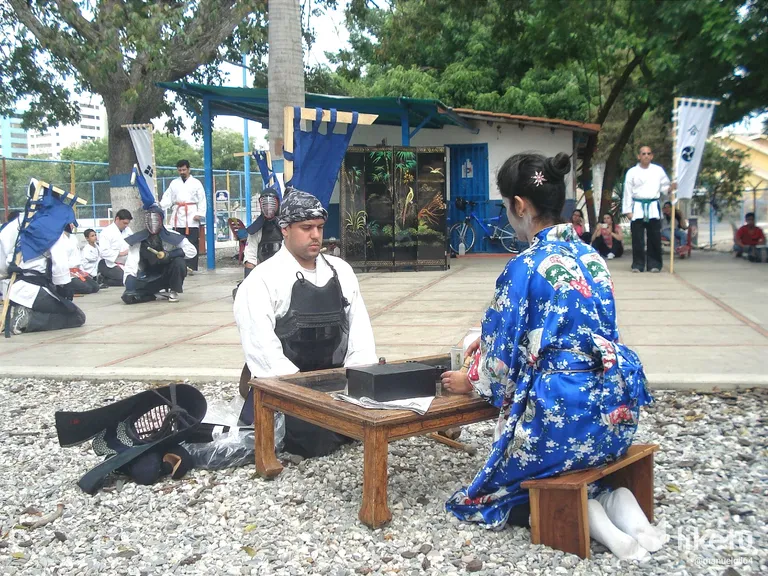
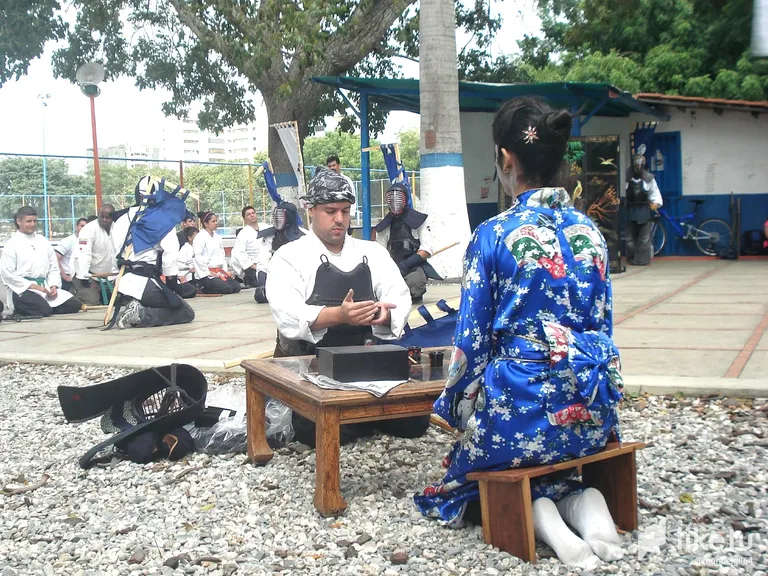
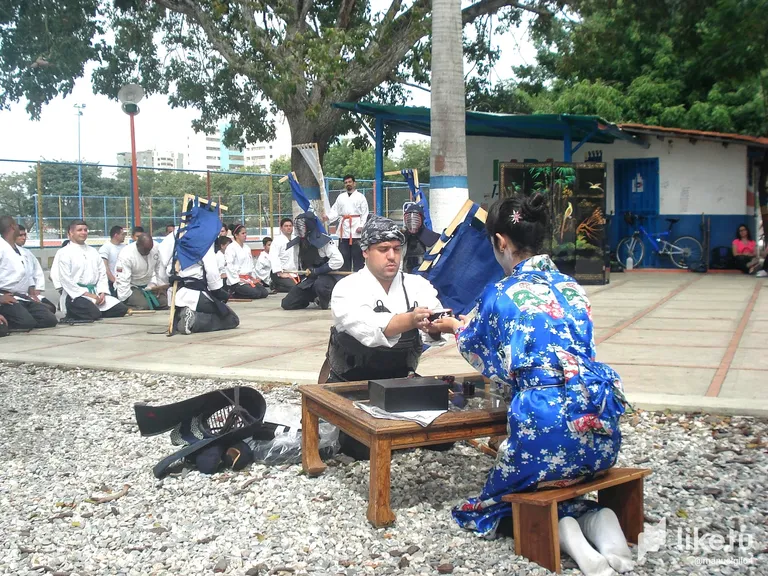
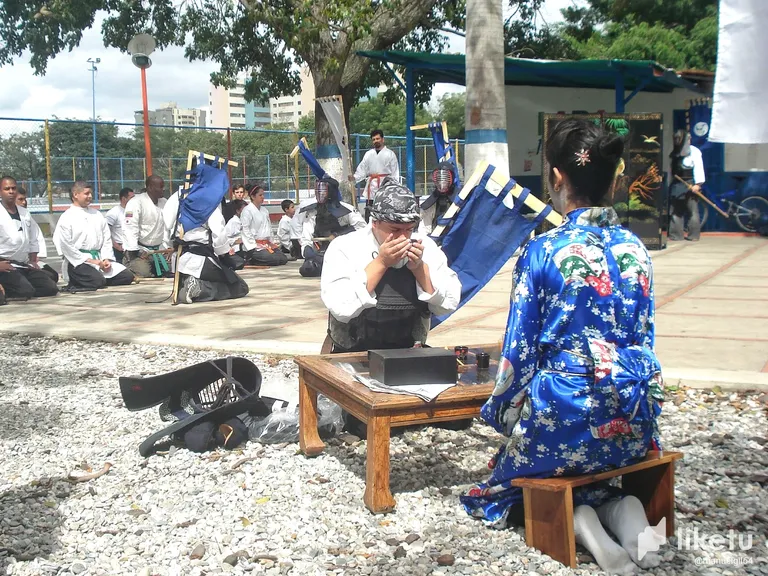
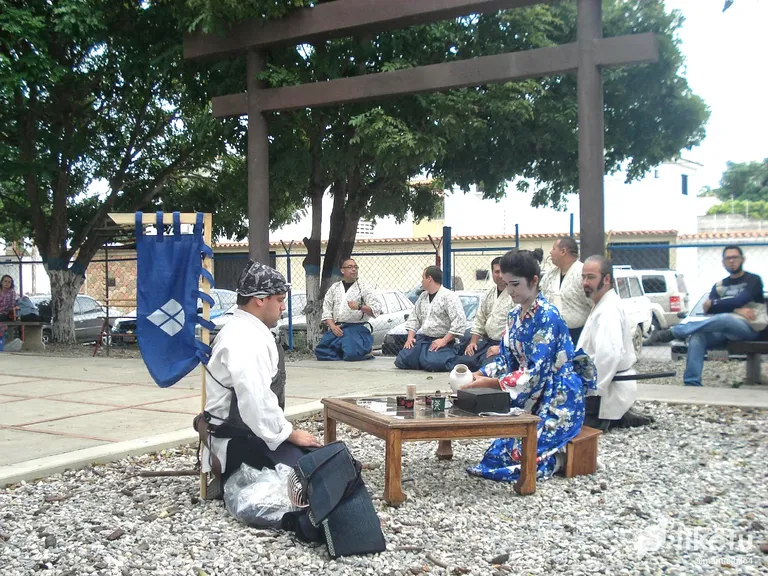
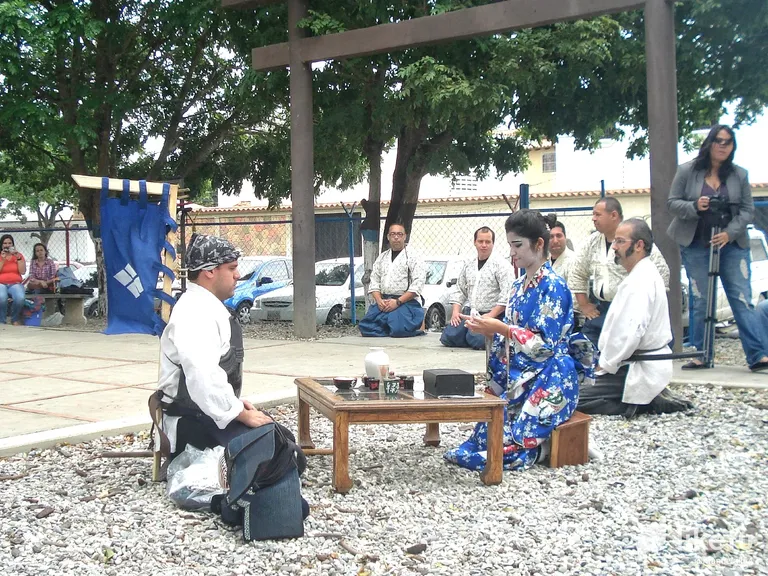
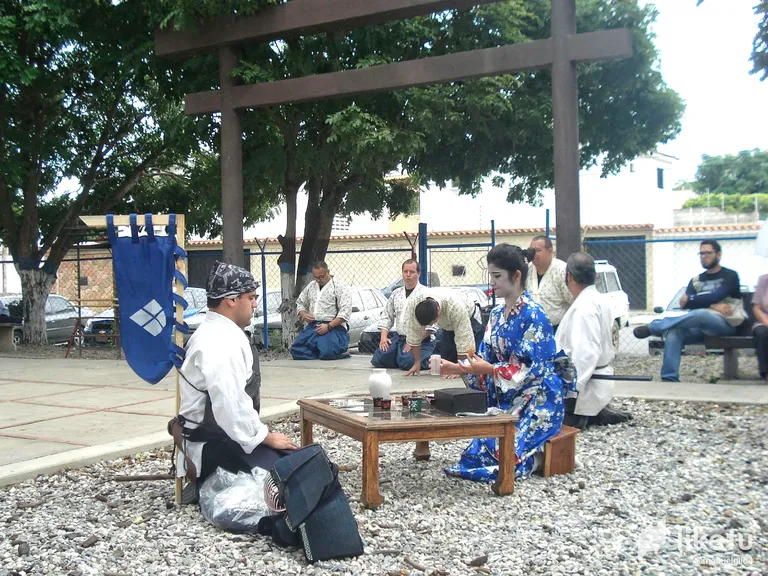

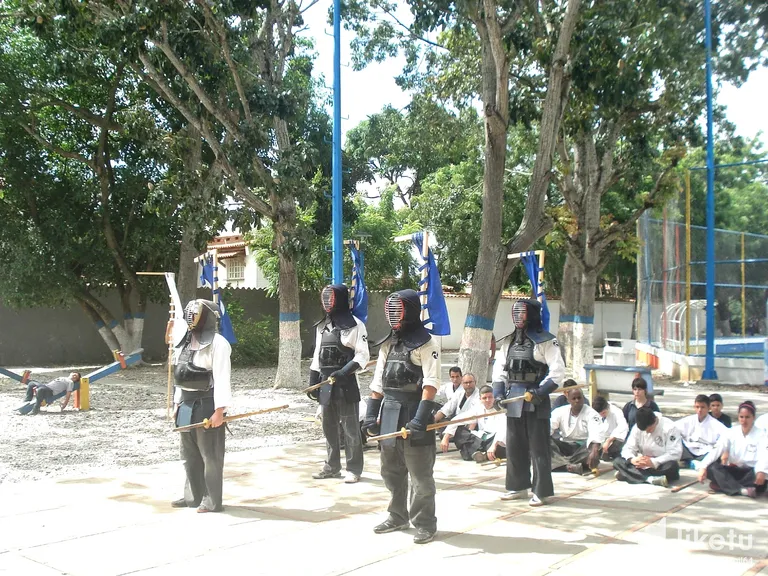

The Tea Ceremony is an ancient ritual practice of preparing and serving tea that is practiced within Asian cultures, particularly in China, Japan, Korea, Taiwan and Vietnam, and is a cultural activity that gives rise to the preparation and presentation of the brew, which is usually offered to a small number of guests in a quiet environment.
The way in which it is performed, or all the art involved around its realization, is called the Tea Ceremony, being the Japanese origin the most known, and is a manifestation of the history and traditional culture of that remote country.
This group of photographs that I took with a digital camera SONY Cyber-shot DSC-W30 one Sunday day in mid-December 2015; had the objective to pay tribute to a warrior Samurai who reached the degree of master or Sensei, within an activity of the Aikijutsu Clan Takeda Okinawa Venezuela, a martial arts school located in the city of Barquisimeto, in the center west of Venezuela; dedicated to the teaching and practice of the Japanese discipline known as Aikijutsu, which was developed by the Master or Sensei, Sokaku Takeda, between the end of the XIX Century and the first half of the XX Century; and that at that time, the older of my two sons, a 17 year old teenager, was practicing.
In that opportunity, a lady close to the warrior, in this particular case, his girlfriend, dresses with the traditional kimono to prepare and offer a cup of tea to her beloved as a sign of respect and admiration for the achievement.
Subsequently, the new Sensei, as a sign of gratitude, repeats the ceremony, preparing and offering a cup of tea to the Master of the Master or Shidoshi, which is the highest ranking member of the clan.
This type of ritual practices are uncommon outside the Asian continent, except in ceremonies related to martial arts, or in immigrant colonies, so that day, all attendees were exceptional witnesses of an unusual activity.
La Ceremonia del Té es una ancestral práctica ritual de preparar y servir el té que se practica dentro de las culturas asiáticas, particularmente, en China, Japón, Corea, Taiwan y Vietnam, y que constituye toda una actividad cultural que da origen a la preparación y la presentación del brebaje, el cual se ofrece usualmente a un reducido número de invitados en un entorno tranquilo.
La manera en la que se realiza, o todo el arte involucrado alrededor de su realización, es denominada la Ceremonia del Té, siendo la de origen japonés la más conocida, y es una manifestación de la historia y cultura tradicional de ese remoto país.
Este grupo de fotografías que tomé con una cámara digital SONY Cyber-shot DSC-W30 un día domingo a mediados de diciembre de 2015; tenía como objetivo rendirle tributo a un guerrero Samurai que alcanzaba el grado de maestro o Sensei, dentro de una actividad del Aikijutsu Clan Takeda Okinawa Venezuela, una escuela de artes marciales ubicada en la ciudad de Barquisimeto, en el centro occidente de Venezuela; dedicada a la enseñanza y práctica de la disciplina japonesa conocida como Aikijutsu, que fuese desarrollada por el Maestro o Sensei, Sokaku Takeda, entre finales del Siglo XIX y la primera mitad del Siglo XX; y que para aquel entonces, practicaba el mayor de mis dos hijos, un adolescente de 17 años de edad.
En esa oportunidad, una dama cercana al guerrero, en este caso en particular, su pareja, se viste con el tradicional kimono para preparar y ofrecerle una taza de té a su amado en señal de respeto y admiración por el logro alcanzado.
Posteriormente, el nuevo Sensei en señal de agradecimiento, repite la ceremonia, preparando y ofreciéndole una taza de té al Maestro del Maestro o Shidoshi, el cual es el miembro de mayor jerarquía del clan.
Este tipo de prácticas rituales son poco comunes fuera del continente asiático, salvo en ceremonias relacionadas con las artes marciales, o en colonias de inmigrantes, por lo que aquel día, todos los asistentes fuimos testigos de excepción de una actividad poco común.
For the best experience view this post on Liketu
https://twitter.com/245348190/status/1611845727826608131
The rewards earned on this comment will go directly to the people( @manuelgil64 ) sharing the post on Twitter as long as they are registered with @poshtoken. Sign up at https://hiveposh.com.
Congratulations @manuelgil64! You have completed the following achievement on the Hive blockchain And have been rewarded with New badge(s)
Your next target is to reach 700 posts.
You can view your badges on your board and compare yourself to others in the Ranking
If you no longer want to receive notifications, reply to this comment with the word
STOPTo support your work, I also upvoted your post!
Check out our last posts:
Wonderful!
I had no idea how many posts I had shared since my early days.
You're welcome @manuelgil64. Looking forward to you reaching your new target 🌹
Congratulations, your post has been upvoted by @dsc-r2cornell, which is the curating account for @R2cornell's Discord Community.
Thank you!
Yay! 🤗
Your content has been boosted with Ecency Points, by @manuelgil64.
Use Ecency daily to boost your growth on platform!
Support Ecency
Vote for new Proposal
Delegate HP and earn more